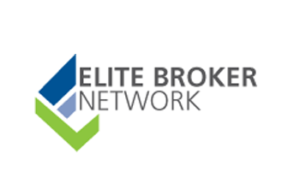Successfully Minimize Risk On Projects Starting Today
Today I want to share two amazing lessons based on actual stories involving real architects and engineers and how you can minimize risk on projects.
(Sadly, one of these is about a firm that lost $100,000, which they could have easily avoided.)
First, some background. For me, one of the best parts of being a risk management specialist is that I get to help architects and engineers create a greater impact on their projects, relationships, and communities.
Equally important, I help them get paid in full and minimize potential hassles and liability.
With that said, headaches and hassles do arise on projects, depending upon the nature of the owner or the contractor.
Here’s a key piece of advice I give clients:
Be proactive. Don’t be reactive. Because you cannot “unring” the bell!!
This can entail different things. Some of them are contractual. Some of them are practice management related. And some are simply bad planning.
Advice about contracts
When it comes to contracts, do not accept bad language. And be sure never to work without a contract. There are times when you might be tempted to sign a contract that is not ideal. We’ve all been there. You want to be hired, and you figure, “What’s the worst that can happen?”
Sadly, these are famous last words.
Minimize Risk Example:
One of my clients, a highly respected landscape architectural firm, has been acting as a sub to a “high-design” architectural firm. The landscape firm gave their proposal to the prime for several phases of the project. They have been working for numerous months already on the basis that their fee and scope reflect the proposal. Yet there is no signed contract.
Just the other day, the prime turned to my client and indicated that they were going to reduce their agreed-upon fee by $100,000 from the original proposal of $500,000. The project hasn’t gone into CDs yet, but the schedule is pressing.
The prime may not be able to get the sub’s full fee from the owner. Or maybe they don’t care. It’s irrelevant at this point.
My client should have been vigilant about executing a contract. As a result of their passive attitude, the negotiation for their fee and scope is going to be more painful than it would have been had they been proactive from the outset.
A Potential Crisis Averted – How to Manage Risk in a Project
Conversely, I recently received a call from another client, a structural engineering firm. They were very clear in their documentation that the contractor was responsible for the underpinning. And it was the contractor’s responsibility to have their own engineer sign and seal their drawings.
The contractor submitted the calculations from their engineer (unsealed) to the structural engineer, with a note indicating the requirement for the engineer of record (my client) to review the drawings and sign and then seal them. As you can imagine, this was not going to happen!
If the structural engineer (my client) DID sign and seal these documents, they would be taking on liability that was not theirs! By being smart and having foresight, they avoided a completely needless risk.
Minimize Risk On Projects – The bottom line:
Be proactive! Don’t be afraid to ask questions! There is a lot on the line.
Construction is a process – but the process has to be followed properly, and each party needs to be aware of their responsibilities and limitations.
If you’re unsure of how to handle certain situations or don’t know the potential repercussions, please consult with your risk management specialist.
If you find these tips helpful, I have many more tips and strategies to help you minimize risk on projects and improve your profitability.


